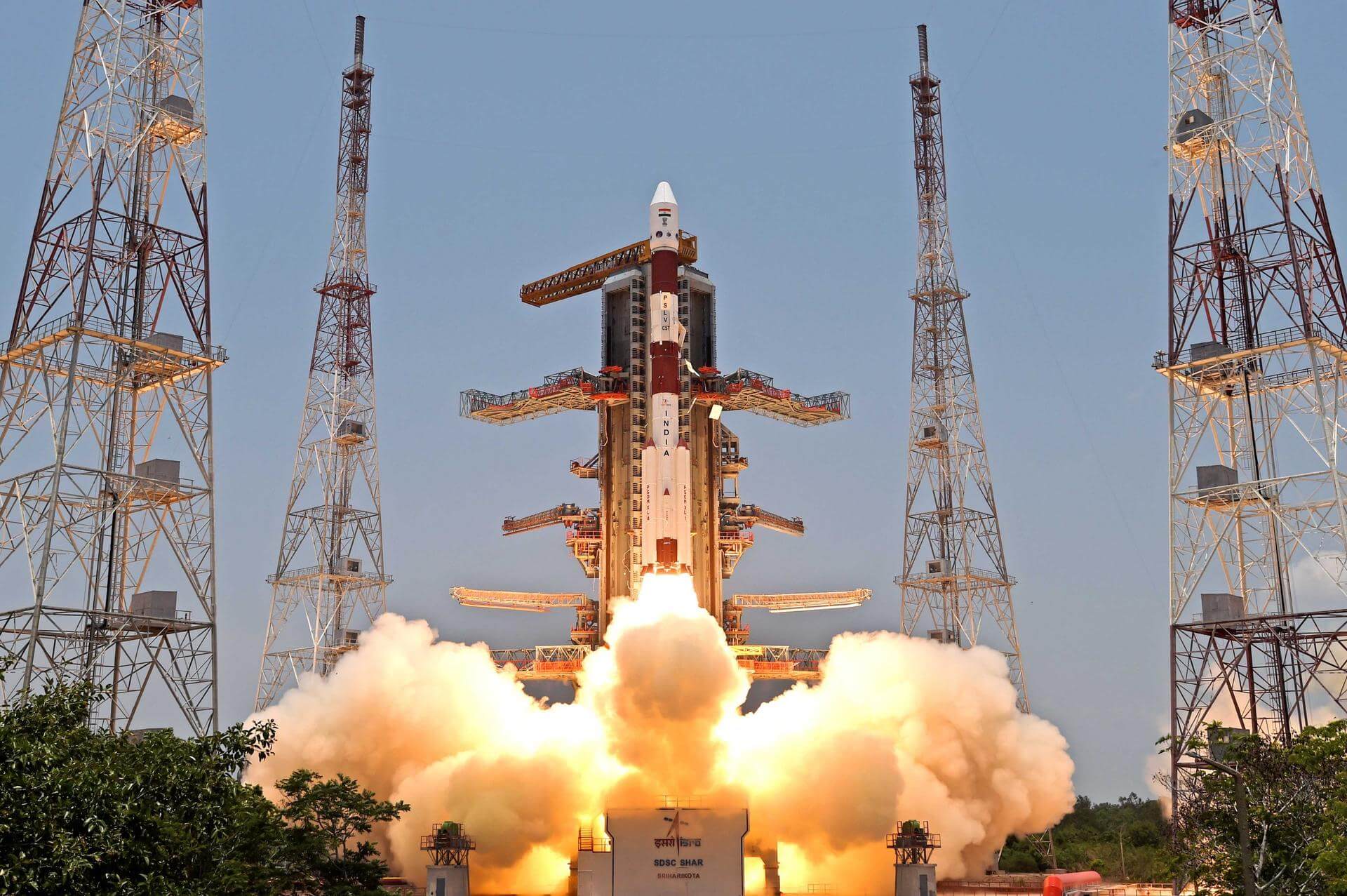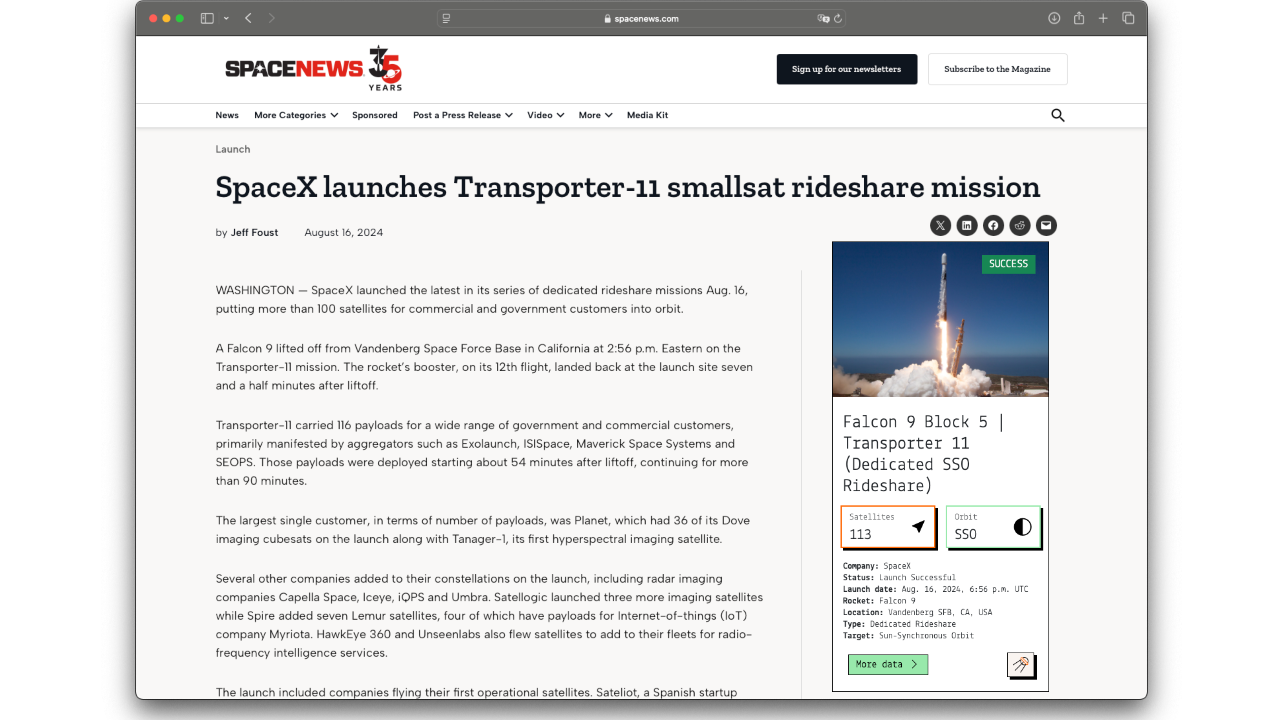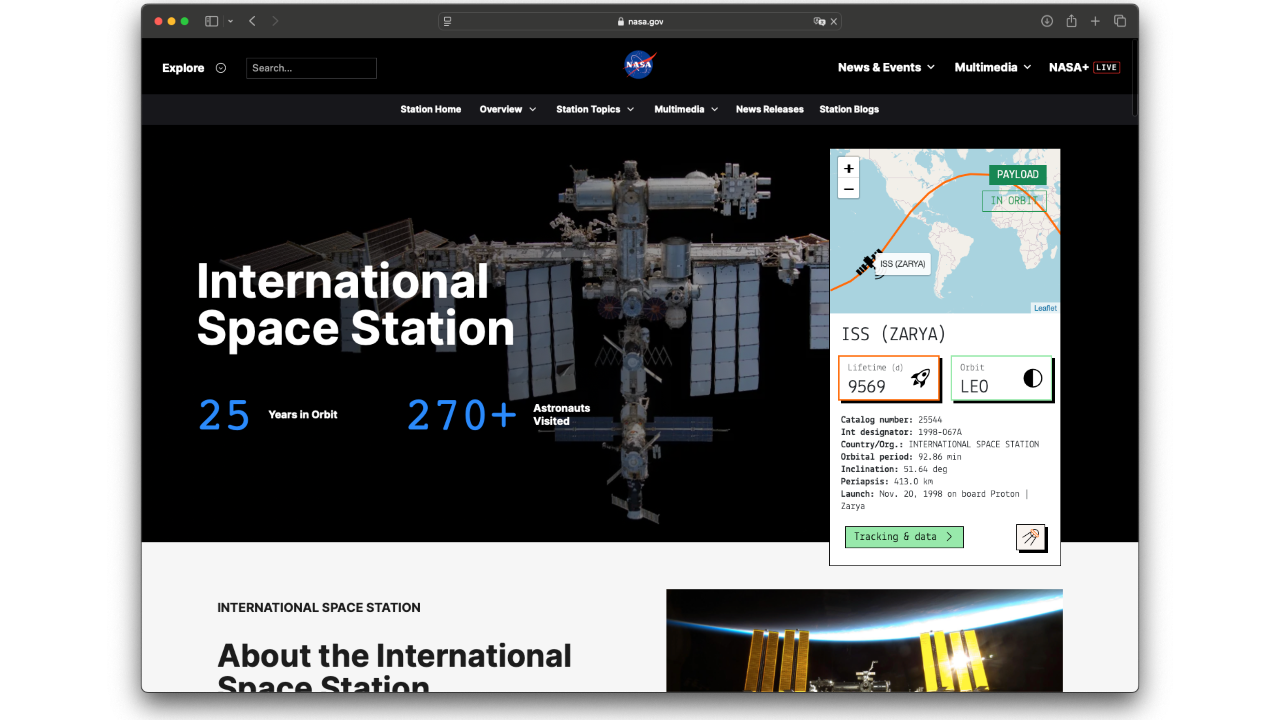Key statistics
Satellite PSLV R/B at a glance.
Uptime
833
Days in orbit
Revolutions
≈ 4.6
Per day
Orbit
MEO
Medium Earth Orbit
Inclination
19.3
Latest
Satellite identification and parameters
Extended collection of information and parameters for PSLV R/B.
Object identification
Identified? True
Debris? False
Object name: PSLV R/B
International designator: 2023-132B
Object number (NORAD): 57755
Object ID (CCSDS): 57755
Country: INDIA (IND)
Current information (Y/N): Y
RCS size: LARGE
Orbital parameters
Period: 315.847 minutes
Inclination: 19.3117 deg
SMA: 15363.084 km
Apoapsis: 17758.914 km
Periapsis: 210.983 km
RAAN: 358.5722 deg
Eccentricy: 0.57110706
Argument of periapsis: 266.7083 deg
Mean anomaly: 30.1607 deg
Mean motion: 4.55916345 rev/day
Mean motion (dot): 0.00047748 rev/day2
B* drag term: 0.0017603956 1/REarth
Two-line elements (TLE)
Creation date: Dec. 10, 2025, 10:40 a.m.
Reference frame: TEME
Reference center: EARTH
Epoch: Dec. 9, 2025, 6:58 p.m. UTC
TLE line 0: 0 PSLV R/B
TLE line 1: 1 57755U 23132B 25343.79072660 .00047748 00000-0 17604-2 0 9994
TLE line 2: 2 57755 19.3117 358.5722 5711071 266.7083 30.1607 4.55916345 36164
Live tracking on map
Real-time ground track for satellite PSLV R/B.
In-orbit conjunctions
There are no conjunctions computed for PSLV R/B, at the moment. Check back to stay up to date, as we update our databases every day.
Go to all conjunctionsAssociated space launch
Aditya L1 is an Indian solar observation satellite to be placed at the Sun-Earth Lagrangian point L1. The major scientific objectives of the mission are to achieve a fundamental understanding of the physical processes that heat the solar corona, accelerate the solar wind and produce Coronal Mass Ejections (CMEs). Originally the mission design started as a small LEO satellite carrying only a coronagraph as a payload. In order to get the best science from the Sun, continuous viewing of the Sun is preferred. A Satellite placed in the halo orbit around the L1 Lagrangian point of the Sun-Earth system has the major advantage of continuously viewing the Sun without any occultation/ eclipses.
PSLV R/B was lifted into orbit during the mission ‘PSLV-XL | Aditya-L1’, on board a PSLV-XL space rocket.
The launch took place on Sept. 2, 2023, 6:20 a.m. from Satish Dhawan Space Centre Second Launch Pad.
For more information about the launch, click the button.

PSLV-XL | Aditya-L1
Agency: Indian Space Research Organization
Status: Launch Successful
Launch date: Sept. 2, 2023, 6:20 a.m. UTC
Rocket: PSLV-XL
Launch pad: Satish Dhawan Space Centre Second Launch Pad
Location: Satish Dhawan Space Centre, India
...
Latest news about this satellite

India’s Aditya-L1 solar observatory enters orbit around Lagrange point
India’s Aditya-L1 solar observatory has reached its destination orbit around Sun-Earth Lagrange point 1 around 1.5 million kilometers from Earth.

India launches first solar research mission, Aditya-L1, aboard PSLV
India’s space program continued its busy 2023 with the launch of its first solar research mission, Aditya-L1, on Saturday. Liftoff, aboard the country’s Polar Satellite Launch Vehicle (PSLV) XL rocket, occurred at 11:50 Indian Standard Time (06:20 UTC) fr...
Newsletter sign-up
Weekly statistics, charts and insights to help you stay on top of the space industry.




